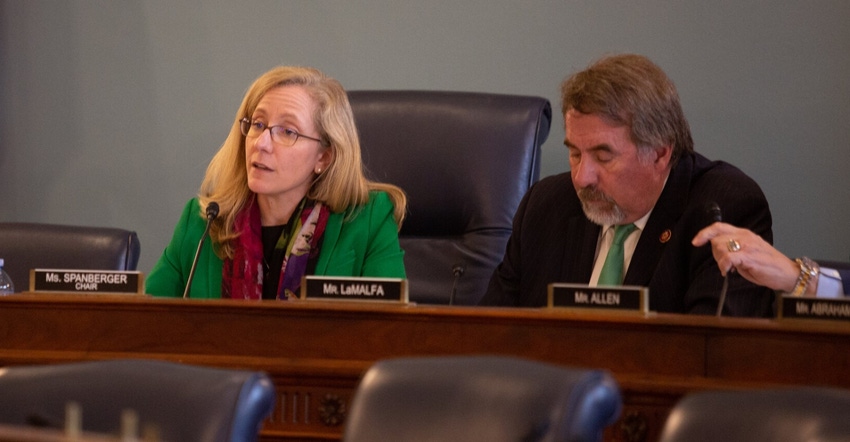Precision ag offers conservation boost
House Agriculture subcommittee holds hearing on benefits of precision agriculture technology.
October 23, 2019

The U.S. House Agriculture Committee’s Subcommittee on Conservation and Forestry held a hearing Tuesday focused on expanding the financial and conservation benefits of precision agriculture technology.
During the subcommittee hearing, members heard from Dustin Madison—a farmer and crop consultant from Louisa County in Virginia’s seventh district—about how farmers can use precision ag tools to achieve tangible conservation benefits. In his testimony, Madison also discussed the challenges that prevent growers from maximizing the potential benefits of these technologies.
In her opening statement, Subcommittee Chair Rep. Abigail Spanberger (D., Va.) highlighted how precision agriculture technologies give Central Virginia crop and livestock producers additional capacity to increase their yields, monitor growing conditions, lower costs and deliver environmental benefits. She also noted how other key rural infrastructure and economic issues—such as reliable broadband access and volatile market conditions— can affect whether farmers adopt these cutting-edge approaches.
“Agriculture remains Virginia’s number-one private industry. And through exciting technologies like satellite mapping, in-field data sharing, and remote management, Central Virginia producers stand to see continued success. These innovations not only allow our region’s growers to boost their yields and to save time in the fields—but they also give farmers the ability to think ahead about the best long-term, sustainable practices for the future of their operations,” said Spanberger. “As Chair of the Conservation and Forestry Subcommittee, I’m committed to scaling up precision ag practices that can both increase production and support voluntary conservation efforts.”
“Farming has evolved a great deal from both a conservation and precision agriculture perspective in just the last 30 years—and it will continue to do so, especially here in the Chesapeake Bay Watershed, where we symbolize so much on a national scale. If we as producers continue to be innovative and earn the support from the non-farming community that we so badly need, there is no limit to what we can accomplish in the years to come,” said Madison.
Madison also serves as a technical service provider with the U.S. Department of Agriculture’s (USDA) Natural Resources Conservation Service (NRCS).
Subcommittee Ranking Member Doug LaMalfa (R., Calif.) noted increasing access to precision agriculture is key to conservation efforts.
“Precision agriculture allows farmers to increase productivity while minimizing input costs. Ideally, all farmers and ranchers would be able to utilize precision agriculture to improve both conservation efforts and farm productivity. In the 2018 Farm Bill, we added precision agriculture to several innovation-driven programs and included multiple provisions aimed at expanding broadband networks to rural areas. Smart conservation, like precision agriculture, is the key to protecting our land and the livelihood of American farmers for generations to come,” LaMalfa said.
You May Also Like



